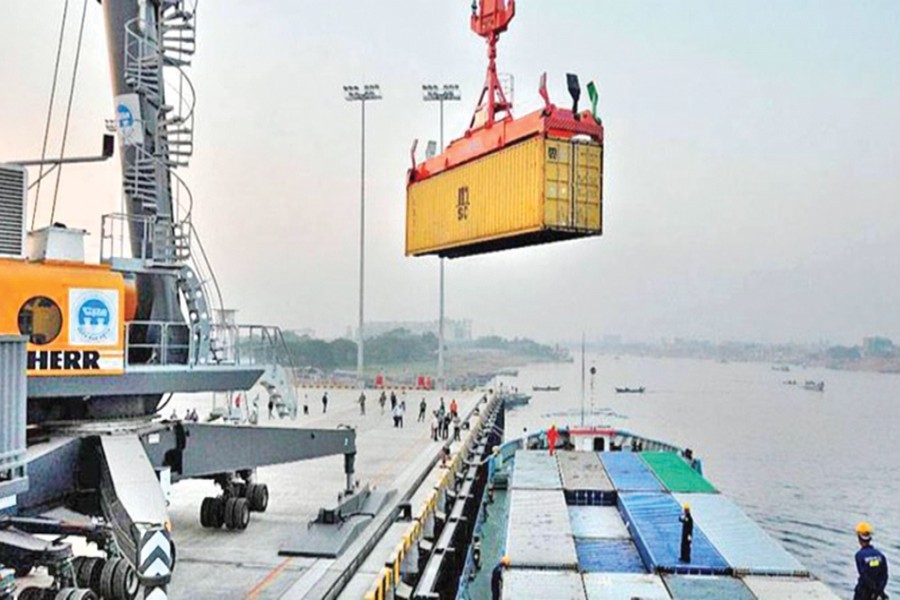Pangaon container terminal, the country's first inland container facility, handled 28,702 twenty-foot equivalent units (TEUs) during the last fiscal year (FY), up by nearly 140 per cent from FY 2016-17.
This implies that the once-idle terminal built at a cost of over a billion of taka on the river of Buriganga is gradually winning the hearts of port users.
The container terminal mainly owned by Chittagong Port Authority (CPA) was established at Keraniganj in Dhaka aimed at easing pressure of cargo movement on the Dhaka-Chattogram railway and highway corridors.
This is based on the fully riverine route and some shallow-draught vessels carry containerised cargoes to and from Chittagong port.
However, in tonnage, handling of containers rose 126 per cent to 179,000 tonnes during FY 2017-18. It included both exports and imports cargoes, according to official documents.
It did not handle a single export box until FY 2016-17, according to statistics prepared by the authority.
For the first time it made shipment during the last fiscal year with 2,180 TEUs export cargoes.
But the Pangaon terminal's capacity still remained much below of its potential.
Its annual capacity is 11,600 TEUs and the handling of some 28,000 TEUs is just nearly 25 per cent.
Manager at the terminal Ahmedul Karim Chowdhury disputed this, saying: "It's true that we are much below our official capacity, but you should understand that we've lack of adequate equipment to handle…."
He said that as soon as the rubber-tyred gantry (RTG) cranes are installed its handling capacity will increase overnight.
Currently, it is being operated by straddle carriers, a sophisticated crane used to move containers from one end to other at the yards.
On the other hand, the RTG has much higher capacity to handle containers.
The rubber crane is expected to be installed at the terminal within the next one year.
The terminal manager said that the clothing shipment will begin from the terminal from the next month.
"We expect our exports to surge from the present level," Mr Chowdhury told the FE.
Some footwear exporters are using the terminal avoiding roadway or railway routes.
Once the export cargoes increase from the terminal its viability will go up.
The terminal was neglected in its initial years with the annual handling of around 700 TEUs.
The port users were not interested in the use of the terminal on many grounds, including the security issue.
However, this is now becoming popular as the government has been offering many incentives including cheaper tariffs than those of the Chittagong port.
Bangladesh Inland Water Transport Authority (BIWTA) and the Chittagong Port Authority (CPA) jointly built this inland terminal at a cost of Tk 1.54 billion.
The terminal is expected to play a positive role in the country's economic development by opening up a new horizon in the transportation of exported and imported goods through waterways.
The terminal can store 3,500 TEUs of containers at a time but its annual capacity is 116,000 TEUs.


